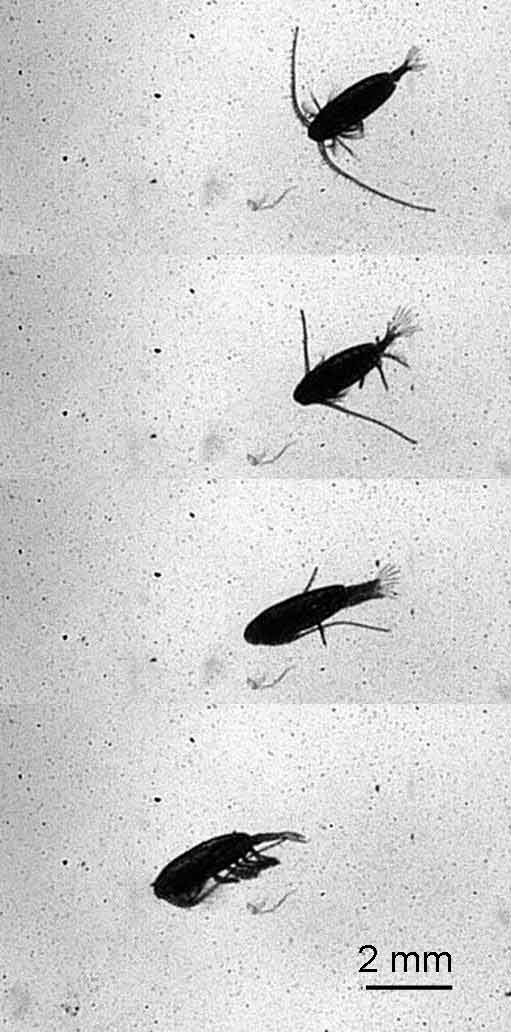Flea-Sized Creatures Are Fastest Jumpers Known

Shrimp-like critters the size of fleas could be the champion jumpers of the animal kingdom, scientists now reveal.
After analyzing high-speed video of three species of crustaceans known as copepods, researchers found that within milliseconds, each of these wee creatures could use its leaps to achieve speeds of a thousand times its body length per second.
Since copepods are typically 1 to 2 millimeters long, that amounts to roughly 2 to 4 miles per hour (3 to 6.4 kilometers per hour), which might not sound like much. However, that would be the equivalent of a 5' 8" person reaching more than 3,800 mph with a jump.
"The films we wanted lasted only one second, but they had to be the right one second," said study researcher Thomas Kiørboe, a marine ecologist at the Technical University of Denmark. "Luck and patience were the most important factors in getting the right footage, and whenever we got something exciting on the camera, everybody applauded."
{{ video="LS_100511_copepod" title="Flea-Sized Critter Is Champion Jumper" caption="This shrimp-like critter, a copepod, could be the fastest jumper of the animal kingdom." }}
These animals swim by forceful strokes with their legs. The researchers' calculations suggest that to overcome the drag of water viscosity (resistance to movement) the copepods' jumping muscles are some 10 times more forceful than any seen in animals before.
"Relative to their size, copepods are stronger than reported for any other animal," Kiørboe said. "And they are also faster, again relative to their size, than any other aquatic animal."
Get the world’s most fascinating discoveries delivered straight to your inbox.
Copepods apparently possess two different systems for propulsion — their feeding appendages, which also find use in regular swimming, and four sets of legs, which seem dedicated solely to escape attempts.
"The escape system is geared for maximum short-term force production, while the swimming system is geared for long-term performance," Kiørboe said. Most other animals have just one propulsion system, which they normally gear toward helping them survive over the long-term if possible, he noted.
Copepods might be the most abundant multicellular animals "not only in the ocean, but on Earth," Kiørboe added. This ability of theirs to escape predators with bursts of speed could be "the key to their evolutionary success," he explained.
The scientists detailed their findings online May 12 in the Journal of the Royal Society Interface.
- Video - Watch the Wee Critter Jump
- Twisted Physics: 7 Mind-Blowing Findings
- 10 Amazing Things You Didn't Know About Animals



